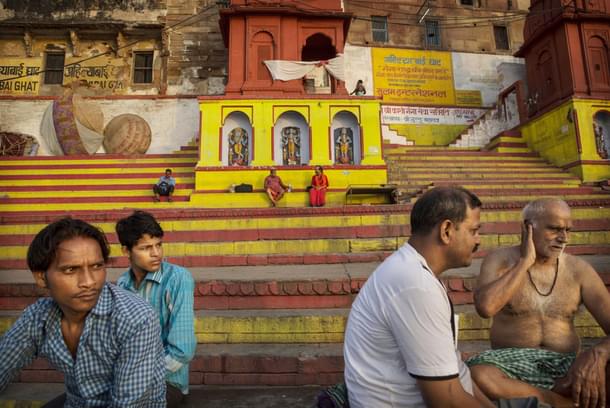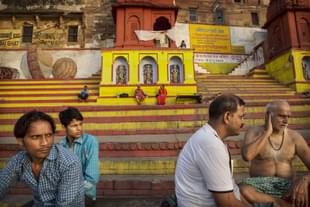Magazine
Why ‘Free Our Temples’ Is Not As Popular In North India
Abhinav Prakash Singh
Nov 02, 2018, 12:17 PM | Updated 12:17 PM IST
Save & read from anywhere!
Bookmark stories for easy access on any device or the Swarajya app.


One of the anomalies of the ‘secular’ state of India is in its power to assume control over the Hindu religious and charitable institutions. While the religious minorities have the freedom to run their own religious affairs and even educational institutions, the Hindus only enjoy a restricted religious freedom. But of late, the issue of the government control over temple administration has become a contested topic as dissenting voices are being raised against it just like against all other consensuses of the Nehruvian era.
But it is intriguing to notice that such voices are emanating largely from the middle class in south India. It is there that we see a greater public understanding of the issues involved and a strong demand for the deregulation of the temples. The issue has failed to find much traction in the north outside the echo chamber of the small groups on the social media. This is surprising, given that some of the most important religious sites and temples of Hinduism are located in the north. Especially because of late, the governments in these states have been following in the footsteps of their southern counterparts in taking over more and more number of temples.
The public apathy in north can be traced back to the historic experience of the region where repeated invasions and foreign rule led to the wholesale destruction of temples and religious institutions. This disrupted the traditions and damaged them beyond repair. Under the Islamic rule, the construction of new temples wasn’t allowed and the old ones still left standing could barely be repaired. This led to decline in the interest and capacity of the society in building and running temples; a slow erosion of will which ultimately led to apathy towards the religious institutions per se. Small family temples along with the institution of the charismatic babas/gurus replaced the systematic and institutionalised religious rituals centred around the large public temples, which once used to be a major hub of the public life. Even in the eighteenth and nineteenth centuries CE, the rise of the regional kingdoms didn’t change the scenario favourably despite some exceptions, like the Hanuman temple in Ayodhya, as most of these new kingdoms were also Islamic kingdoms. This was unlike the Deccan and the south, where a strong upswing in the temple building was underway during this period and political patronage ensured the revival of the old customs and ceremonies.
The second reason is in fact a corollary of the above. The break on the continuity and decline in the traditions meant that the society and priestly class lost the capacity to effectively run such institutions. The temples became hubs of anarchy, corruption and mismanagement even after the yoke of Islamic rule was overthrown and a semblance of religious freedom was established under the colonial rule. The property disputes between the hereditary trustees often led to violence, and court cases prepared the ground for the ever widening government interference. The constant harassment of the pilgrims and a lack of interest in ensuring better facilities lowered the public trust in the temple management and increased demand for government intervention to restore order.
It may come as a surprise to some of the campaigners of the ‘Free Our Temples’ movement but government takeover of the temples is normally welcomed by the public in north India. The move by the Uttar Pradesh government in 2015 and 2016 to take over the famed Banke Bihari Temple in Mathura and Vindhyachal Mandir in Mirzapur evoked no public support for those who opposed it. The Bharatiya Janta Party opposed it but was vigorously attacked by the Samajwadi Party (SP) on the plank of providing better services to the people instead of doing ‘mandir politics’. The public by and large were inclined towards the SP argument and it is not difficult to see why. Vindhyachal Devi is the kula-devi of my family and even we didn’t bother with the government move as we have seen how visiting the temple has hardly been a pleasant experience due to the mismanagement, harassment and chaotic facilities. Same is the story with the Banke Bihari Temple, where the harassment by pandas (priests) is unspeakable. A few years back, on seeing their behaviour with the devotees, I decided not to go back unless things improve. It is not a surprise to see that the larger public also holds similar views.
The third reason has to do with the issue of ensuring caste representation and stopping caste discrimination in the temples. This is the issue that ‘Free Our Temples’ campaigners have avoided so far but it is arguably the strongest moral argument used in favour of state intervention in the affairs of the temples. How will freeing temples of government control resolve the age-old problem of discrimination in temple entry and other services? So far, no convincing answer has been given. This suggests that the campaign has a limited social reach in the politics of the north where caste representation is a major issue.
Fourth, unlike the south, Christianity and the associated phenomenon of ‘crypto-Christians’ isn’t widespread in the north as of yet. This means that almost all of the people assigned to the temple management after the government takeover are Hindus unlike in the south where non-Hindus (Christians) have infiltrated the temple-related services under the cover of state control. Therefore, the lack of alarmism is also a reason for public disinterest in the north as the full repercussions of government control over temples in the long-run aren’t fully recognised.
What the ‘Free Our Temples’ campaign needs to understand is that so far it has not succeeded in creating mass awareness on the issue, nor has it proposed any viable alternative to present government control to overcome the issues which perpetuated the control in the first place.
It is not enough to criticise the present system and talk about its dangers. It is equally important to put forward a vision and alternative which is superior and under which all sections are better off than before.
This article is part of Swarajya’s series on Indic heritage. If you liked this article and would like us to do more such ones, consider being a sponsor—you can contribute as little as Rs 2,999. Read more here.
Abhinav Prakash Singh is an Assistant Professor at the University of Delhi.





